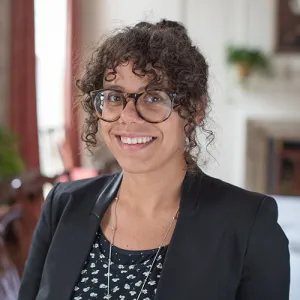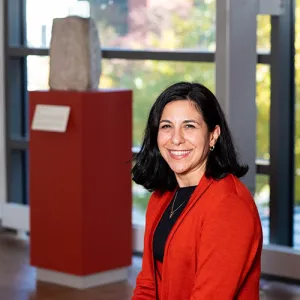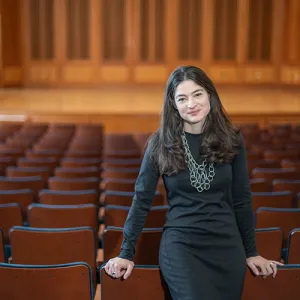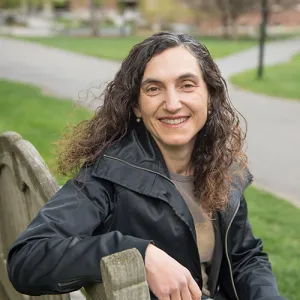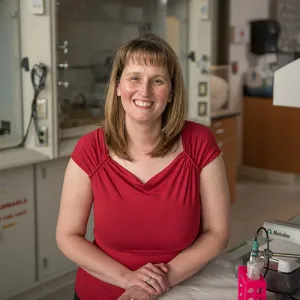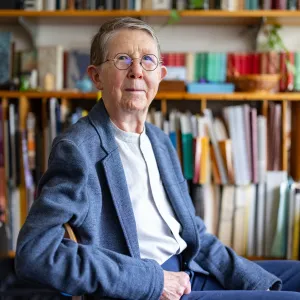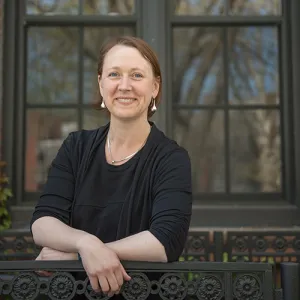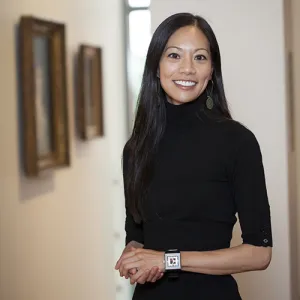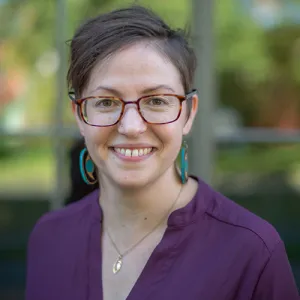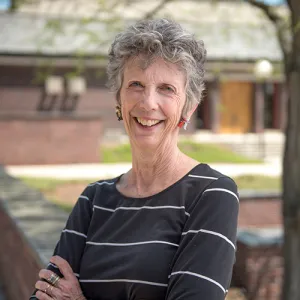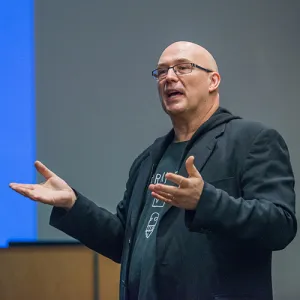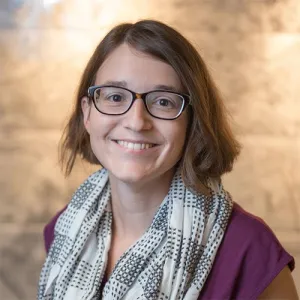
Museums Concentration
The Museums Concentration gives students a foundation in the history of museums and the critical issues they engage. Through a combination of academic course work, two internships and independent research, students learn about institutions that shape knowledge and understanding through collection, preservation, interpretation and display of material culture. The Museums Concentration provides a unique opportunity at the undergraduate level for students to consider how their academic studies might connect to their future lives and careers. Students are introduced to issues such as community access, cultural ownership and public accountability—areas of study that will be important whatever they decide to do after Smith.
Announcements
Concentrations Fund
The Concentrations Fund supports concentrators with funding needs of up to $100 total per academic year that directly relate to their concentration (e.g., materials, activities, or travel). Applications will be reviewed by concentration directors and considered in relation to other applications across all concentrations at the beginning of each month through the semester. Students may apply for up to $100 per academic year. Please note that, because of fund limits, not all applications will be funded. Awarded funds will be distributed to reimburse students for actual expenses, once students have submitted receipts.
Requirements & Courses
Learning Goals
The goals for students completing the museums concentration are:
-
Expand and deepen understanding of the origins of museums (including art, history, science, natural history) and the forces that have shaped/are shaping their role in society;
-
Develop the ability to think critically about museums, demonstrating an understanding of issues facing them today;
-
Gain insight into the nature of work performed in museums and skills associated with different professional roles.
The concentration achieves these goals by asking participating students to identify their particular interests and explore them through relevant courses and hands-on work. By combining guided reflection with carefully selected coursework and internships in museums and related cultural organizations students are expected to:
-
Gain and demonstrate insight into the role of museums in culture, for example, as institutions embedded in historical contexts and as sites of cultural production;
-
Develop an in-depth understanding of an area of interest by integrating coursework with learning from two or more extended practical experiences;
-
Develop a critical awareness of how museums engage audiences with collections;
-
Learn and practice skills related to the research, interpretation and presentation of objects or things preserved in museum collections;
-
Undertake original research and synthesize learning in the concentration in a capstone project and public presentation;
-
Develop a clear sense of purpose and personal values, including understanding individual strengths and ways in which specific skills and disciplinary training can be applied to a diverse range of career contexts.
Courses
MUX 222 Colloquium: Topics in Museums Studies (1 Credit)
What goes on behind the scenes in a museum? Who makes the decisions about what to collect and how to display and interpret it? How do concepts of mission and public trust guide that work? Through a series of rotating topics, Studies in Museums considers the conceptual and practical issues governing the work of museums. The course uses the resources of the Smith College Museum of Art--collections, programs, and staff--to explore these issues in practice. Through this work students are introduced to the professional disciplines found within the field of museums, including curation, education, conservation, and registration. Restrictions: MUX 222 may not be repeated. Enrollment limited to 16.
Interterm, Variable
MUX 222np Colloquium: Topics in Museums Studies-Nazi-era Provenance Research (1 Credit)
Provenance is a crucial aspect of museum practice. This class presents an overview of provenance research and restitution in museums with a focus on art looted by the Nazis during World War II (1933-1945). It addresses the ethics, legality, and complications surrounding the restitution of works of art that are still ongoing. The course uses objects from the SCMA collection as case studies of the various approaches to provenance research. Students learn how to conduct basic research by consulting a variety of sources. Guest speakers offer additional training and insight. S/U only. Restrictions: MUX 222 may not be repeated. Enrollment limited to 16. (E)
Interterm, Variable
MUX 300 Seminar: Museums Concentration Research Capstone Seminar (4 Credits)
Required for all seniors pursuing the museums concentration, this seminar provides a forum for students to develop research capstone projects that synthesize their previous coursework and practical experiences for the Museums Concentration. These projects are supplemented by weekly seminar meetings in which students explore and critique the mission and work of museums and contemporary forces shaping them. Class sections also provide a forum for progress reports and discussion of individual research projects as well as final presentations. Students must have completed the requirements for the Museums Concentration (www.smith.edu/academics/museums-concentration). Cannot be taken S/U. Restrictions: Seniors only; Museums concentrators only. Enrollment limited to 15. Instructor permission required.
Spring
MUX 400 Special Studies (1-4 Credits)
Normally, museums concentrators only. Instructor permission required.
Fall, Spring
Crosslisted Courses
AMS 302 Seminar: The Material Culture of New England, 1630–1860 (4 Credits)
This course examines the material culture of everyday life in New England from the earliest colonial settlements to the Victorian era. It introduces students to the growing body of material culture studies and the ways in which historic landscapes, architecture, furniture, textiles, metalwork, ceramics, foodways and domestic environments are interpreted as cultural documents and as historical evidence. Offered on-site at Historic Deerfield (with transportation available from the Smith campus), the course offers students a unique opportunity to study the museum’s world-famous collections in a hands-on, interactive setting with curators and historians. Utilizing the disciplines of history, art and architectural history, anthropology, and archaeology, students explore the relationships between objects and ideas and the ways in which items of material culture both individually and collectively convey patterns of everyday life. Restrictions: Juniors and seniors only. Enrollment limited to 12. Instructor permission required. Arts; Historical Studies
Spring
ANT 135/ ARC 135 Introduction to Archaeology (4 Credits)
Offered as ANT 135 and ARC 135. This course studies past cultures and societies through their material remains and explores how archaeologists use different field methods, analytical techniques and theoretical approaches to investigate, reconstruct and learn from the past. Data from settlement surveys, site excavations and artifact analysis are used to address economic, social, political and ideological questions across time and space. This course is taught from an anthropological perspective, exploring key transitions in human prehistory, including the origins of food production, social inequality and state-level societies across the globe. Relevance of archaeological practice in modern political, economic and social contexts is explored. Restrictions: First-years and sophomores only. Enrollment limited to 30. Natural Science; Social Science
Fall
ANT 237 Monuments, Materials and Models: The Archaeology of South America (4 Credits)
This course offers an overview of the archaeology of South America, from the earliest traces of human occupation over 10,000 years ago to the material culture of the present. The course focuses on how archaeologists use data collected during settlement surveys, site excavations and artifact analysis to reconstruct households and foodways, social and political organization, and ritual and identity over the millennia. Discussions also include the relevance of the past in contemporary indigenous rights movements, heritage management strategies and nationalist projects. Natural Science; Social Science
Fall, Spring, Alternate Years
ARH 110 Art and Its Histories (4 Credits)
This course explores how art and architecture have profoundly shaped visual experiences and shifting understandings of the past and present. Featuring different case studies, each section includes work with original objects, site visits and writings about art. Unifying themes include: (1) materials, techniques and the patterns deployed to create space; (2) the design, function and symbolism of images and monuments; (3) artistic production and its relation to individual and institutional patronage, religion, politics and aesthetics; (4) issues turning on artists’ fame versus anonymity and uniqueness versus reproducibility; and (5) cross-cultural exchanges. Enrollment limited to 25. Arts; Historical Studies
Fall, Spring
ARH 217/ CLS 217 Greek Art and Archaeology (4 Credits)
Offered as CLS 217 and ARH 217. This course is a contextual examination of the art and architecture of Ancient Greece, from the end of the Bronze Age through the domination of Greece by Rome (ca. 1100-168 BCE) and handles an array of settlements, cemeteries and ritual sites. It tracks the development of the Greek city-state and the increasing power of the Greeks in the Mediterranean, culminating in the major diaspora of Greek culture accompanying the campaigns of Alexander the Great and his followers. The course takes a broadly chronological approach, and the question of a unified Greek culture is stressed. Continuing archaeological work is considered. Arts; Historical Studies
Fall, Spring, Alternate Years
ARH 247 Colloquium: The Art and History of the Book (4 Credits)
Will books as material objects disappear in the near future? Or will the book, a remarkably long-lived piece of communication technology, continue to flourish and develop alongside its electronic counterparts? This course surveys the artistry and history of books from the ancient world through medieval manuscripts, hand press books and machine press books, to the digital media of today. Students discover how books were made, read, circulated, and used in different eras, and explore the role they have played over time in social, political, scientific, and cultural change. The course involves extensive hands-on work with books and manuscripts from across the centuries and sustained engagement with current debates about book, print, and media culture. Instructor permission required. Enrollment limited to 12. Arts; Historical Studies
Spring
ARH 290cv Colloquium: Topics in Art History-Colonialisms and Their UnMaking: Land, Water, Bodies, Belongings (4 Credits)
How does conquest by foreigners change the ways that images, objects, and environments (built and otherwise) are created and used? How do different forms of colonialism—settler, extractivist, etc.—remake values and thus objects, civic spaces, humans, and other living beings? What kinds of loss does colonization produce, what kinds of resilience? Focusing on recent scholarship, this class addresses these questions, highlighting the 16th–19th centuries. Discussion include: the production of colonial spaces and buildings; exchanges that brought people and objects into contact (and conflict); nationalist museum and archival projects; and current debates about decolonization, repatriation, and reparation. Counts for ARU. Restrictions: ARH 290 may be taken for credit a total of 4 times with different topics. Enrollment limited to 20. Arts; Historical Studies
Fall, Spring, Variable
ARX 120/ BKX 120/ MUX 120 Colloquium: Concentration Gateway Course (4 Credits)
Offered as ARX 120, BKX 120 and MUX 120. This course serves as a shared gateway for the Archives, Book Studies and Museums concentrations. Students explore histories, futures and systems of knowledge production, preservation, organization and distribution through the kinds of objects and evidence held by archives, libraries and museums. As evidence of their evolving and complex operations, this course introduces the history of such institutions, their evolving public mission, issues central to their work today, and the creation and uses of materials they hold. The course critically engages the emergence of such institutions, specifically within this regional context and in this framework of a college campus. S/U only. Enrollment limited to 25. (E)
Fall, Spring, Annually
CHM 100ao Topics on Perspectives in Chemistry-Chemistry of Art Objects (4 Credits)
In this museum-based course, chemistry is discussed in the context of art. The course focuses on materials used by artists and how the chemistry of these materials influences their longevity. Current analytical methods as well as preservation and conservation practices are discussed along with examples from the Smith College Museum of Art. Restrictions: CHM 100 may not be repeated. Enrollment limited to 16. Arts; Natural Science
Spring
CHM 111 Chemistry I: General Chemistry (4 Credits)
The first semester of our core chemistry curriculum introduces the language(s) of chemistry and explores atoms, molecules and their reactions. Discussions include electronic structures of atoms, structure shape and properties of molecules; reactions and stoichiometry. Enrollment limited to 16 per lab section. Multiple sections are offered at different times, as detailed in the Schedule of Classes. At the time of registration students must register for both a lecture and a lab section that fit their course schedule. Corequisite: CHM 111L. Restrictions: Not open to students who have taken CHM 118. Enrollment limited to 40. Natural Science
Fall
CHM 111L Chemistry I Lab: General Chemistry Lab (1 Credit)
Lab Section. The first semester of our core chemistry curriculum introduces the language(s) of chemistry and explores atoms, molecules and their reactions. Topics covered include electronic structures of atoms, structure shape and properties of molecules; reactions and stoichiometry. Multiple sections are offered at different times, as detailed in the Schedule of Classes. At the time of registration students must register for both a lecture and a lab section that fit their course schedule. Corequisite: CHM 111. Enrollment limited to 16. Natural Science
Fall
CHM 118 Advanced General Chemistry (4 Credits)
This course is for students with a very strong background in chemistry. The elementary theories of stoichiometry, atomic structure, bonding, structure, energetics and reactions are quickly reviewed. The major portions of the course involve a detailed analysis of atomic theory and bonding from an orbital concept, an examination of the concepts behind thermodynamic arguments in chemical systems, and an investigation of chemical reactions and kinetics. The laboratory deals with synthesis, physical properties and kinetics. The course prepares students for CHM 222 and CHM 223, and replaces both CHM 111 and CHM 224. Corequisite: CHM 118L. Restrictions: Not open to students who have passed either CHM 111 or CHM 224. Enrollment limited to 40. Natural Science
Fall
CHM 118L Advanced General Chemistry Laboratory (1 Credit)
Lab course for CHM 118. This course is for students with a very strong background in chemistry and provides a foundation in basic lab technique, particularly for quantitative analytical measurements. It begins with an introduction to light as a tool for investigating aspects of chemical systems such as acid/base behavior and metal-ligand chemistry. The second half of the lab consists of a project module where students develop greater independence in their chemistry skills while investigating the behavior of one particular chemical system in depth. Each student also learns to keep a laboratory notebook, prepare scientific reports and presentations, and work safely in a chemical environment. Corequisite: CHM 118. Enrollment limited to 16. Natural Science
Fall
CHM 224 Chemistry IV: Introduction to Inorganic and Physical Chemistry (4 Credits)
This final course in the chemistry core sequence provides a foundation in the principles of physical and inorganic chemistry that are central to the study of all chemical phenomena. Discussions include quantitative treatment of thermochemistry, chemical equilibria, electrochemistry and reaction kinetics. Corequisite: CHM 224L. Prerequisites: CHM 111 and CHM 111L or equivalent. MTH 111 recommended but not required. Enrollment limited to 40. Natural Science
Spring
CLS 218 Hellenistic Art and Archaeology (4 Credits)
This course examines the art, architecture and material culture of the Hellenistic period, spanning the years from 323 to 31 BCE and representing one of the most exciting and dynamic eras of Greek history. Beginning with the expansionist campaign of Alexander the Great and ending with the conquests of the future emperor Augustus, it is a time of fast-paced change, experimentation and diversity. In addition to examining the archaeology of this period, the course explores ideas about the accessibility of archaeological material and how this may be facilitated through digital collections and virtual reconstructions. Arts; Historical Studies
Fall, Spring, Alternate Years
EDC 235 Child and Adolescent Growth and Development (4 Credits)
This course is a study of the theories of growth and development of children, from prenatal development through adolescence. This course looks at basic considerations of theoretical application to the educative process and child study and involves directed observation in a variety of child-care and educational settings. Enrollment limited to 55. Social Science
Fall, Spring
EDC 238 Introduction to the Learning Sciences (4 Credits)
This course combines perspectives on cognition and learning to examine the teaching-learning process in educational settings. In addition to cognitive factors, the course incorporates contextual factors such as classroom structure, teacher belief systems, peer relationships and educational policy. Consideration of the teaching-learning process highlights subject matter instruction and assessment. Prerequisite: a genuine interest in better understanding teaching and learning. Enrollment limited to 30. Natural Science; Social Science
Spring
EDC 347 Inclusive and Accessible Classrooms for Disabled Students (4 Credits)
In this class, the primary goal is to learn how to support disabled students in inclusive schooling environments. First, this course critically examines ableism and disability in schools, as well as intersections between ableism and other systems of inequality in education. The course also covers basic policies and procedures of special education in U.S. schools, so that students, as potential educators, understand their legal responsibilities to disabled students. For the second half of the semester, the course focuses on how to create inclusive, accessible environments for students with disabilities. Prerequisites: EDC 238. Social Science
Fall
FYS 197 On Display: Museums, Collections and Exhibitions (4 Credits)
Why do people collect things and what do they collect? Students explore these questions by focusing on local museums and exhibitions. From a behind-the-scenes look at the Smith College Museum of Art to an examination of hidden gems like the botanical sciences herbarium collection or that cabinet of curiosities which is Mount Holyoke’s Skinner Museum, students research the histories of these collections and analyze the rationale of varying systems for ordering objects. By learning the critical skills of visual analysis and by grappling with the interpretations of art historians, anthropologists and psychologists, students attempt to come to an understanding of how knowledge is constructed in the context of display and how visual juxtapositions can generate meaning. Restrictions: First-years only; students are limited to one first-year seminar. Enrollment limited to 16. WI
Fall, Spring, Variable
IDP 116 Introduction to Design Thinking (1 Credit)
This course emphasizes hands-on, collaborative design driven by user input. Students critique their own and each others’ designs, and review existing technology designs to evaluate how design principles are guided by the practices of the intended user. The course focuses on using qualitative research observations to inspire new approaches to design. Students iteratively design a multimedia approach to framing problems, communicating ideas and exploring the ethical, political and social implications of design in the world. S/U only. Enrollment limited to 16. Instructor permission required.
Fall, Interterm, Spring, Variable
IDP 132 Designing Your Path (1 Credit)
In this course, students test different integrative paths of their own design, tell their own story, and collect their work in a portfolio. They learn to articulate connections between their work in and outside of the classroom, and explain how Smith is preparing them to engage with the world beyond. This course is for students who are starting their Smith journey, embarking on or returning from an immersive experience abroad, weaving their interests through a concentration or self-designed major, or wrestling with expressing what a Smith education has prepared them to do. S/U only. Enrollment limited to 12.
Fall, Spring, Variable
IMX 316 Interdisciplinary Making Concentration Capstone (4 Credits)
This interdisciplinary project-based Capstone course for the Interdisciplinary Making Concentration emphasizes the design process as well as critical social theory on the relationships between humans, designed things and the environment. Through hands-on, individual or collaborative making, students learn how to bring an idea from the concept phase to a final project through research, idea generation, prototyping, iterative improvement and end-of-life planning. This learning happens alongside rich class discussions of seminal and contemporary scholarly work on design’s role in shaping the world. Perspectives include philosophy, anthropology, critical psychology, sociology, cognitive science, history, archeology, theater, studio arts, dance, material science, geometry, physics and feminist theory. Prerequisite: IDP 111. Interdisciplinary Making Concentrators only. Enrollment limited to 15. Instructor permission required.
Fall, Spring, Variable
LAS 291 Colloquium: Decolonize This Museum? (4 Credits)
What does it mean to de-colonize a museum? How does such work happen, and who actually does the "decolonizing?" With these questions as guide, this class considers Latin American museums--of art, natural history, local and other histories--through comparative lenses. Decolonizing conversations are taking place in many parts of the world, and so this course addresses Latin American and Latinx projects in relation to those taking place in Africa and the Pacific Islands, in western Europe and North America. Independent research projects figure prominently. At least one class in Latin American and Latino/a Studies, art history or anthropology is recommended. Enrollment limited to 18. Arts; Social Science; Historical Studies
Fall, Spring, Variable
LSS 245 Place Frames: Photography As Method In Landscape Studies (4 Credits)
Photography and landscape are intertwined. Scholars, design professionals, artists and journalists use photographs as evidence, as a means of representing sites, as a design tool, as source material for project renderings and as documentation. This course focuses on how photography is a part of field observations and research techniques, how photographs are used in landscape studies and how text and image are combined in different photographic and scholarly genres. Students take photographs and examine the photographs of landscape architects, urbanists, artists and journalists. Field exercises are combined with workshops, discussions and research at the Smith College Museum of Art. Enrollment limited to 15. Arts; Social Science
Fall, Spring, Variable
PHI 233 Aesthetics and Philosophy of Art (4 Credits)
This course focuses on two overlapping clusters of philosophical questions. The course considers aesthetic problems like: What is beauty? How does one experience it, and where—in nature, in art, in ordinary objects and activities? Are there objective standards for aesthetic judgments? In philosophy of art, the course considers problems like: What makes something a work of art? What is art for? Do artists have moral responsibilities, and can art cultivate our moral sensibilities? Readings are from worldwide philosophical traditions. Assignments involve extensive use of the resources of the Smith College Museum of Art. Arts; Social Science
Fall, Spring, Variable
PSY 268 Colloquium: The Human Mind and Climate Change (4 Credits)
This course explores the human side of climate change. Drawing from the domains of social, cognitive, developmental and clinical psychology, as well as interdisciplinary theories related to human decision-making, behavior and motivation, the course explores questions raised by the American Psychological Association’s Task Force on global climate change. Prerequisites: PSY 100 or equivalent. Enrollment limited to 25. (E) Social Science
Fall, Spring, Variable
THE 154 “Reading” Dress: Archival Study of Clothing (4 Credits)
How does one “read” clothing? How accurate is the interpretation? What clues does one miss or misread, especially in dress from an era unfamiliar to them? What information can one look for to “explain” the significance or meaning of the garment? This course is an introduction to a methodology for the study of dress as material culture, examining physical structure, terminology, technology of production, and some of the historical, social and cultural variables shaping, and shaped by, these objects. It is a class using objects from the Smith College Historic Clothing Collection. Each student studies several similar garments, identifying common features as well as distinctions that may reflect different classes, aesthetic choices and industrial influences. Enrollment limited to 20 students. Historical Studies
Fall
Museums Concentration
Requirements
Six courses
- A gateway course or approved alternative, such as FYS 197
- Four elective courses
- Two relevant internships or other practical experiences
- Capstone course: MUX 300
- Two courses fulfilling concentration requirements may also count toward a major
- One course fulfilling a concentration requirement may also count toward a minor
- Detailed information about the requirements is available on the Museums Concentration website.
Additional Programmatic Information
The Museums Concentration accepts up to 15 students annually. Applications are accepted only from sophomores and juniors.Students are encouraged to apply in the fall of their sophomore year. Preference is given to students with a demonstrated interest in the application of their academic discipline to the world of museums. Eligible applicants will already have completed two of the courses on the list of required and elective courses. Some students may choose to pursue the Museums Concentration in addition to a second major or a minor when the concentration unifies and reinforces a particular program of study.
Overview
Course work will be complemented by at least two practical experiences within museums. These may include internships and paid or volunteer work. The elective courses combined with these practical experiences can offer you the opportunity to explore one or more specialized disciplines within the work of museums, such as curatorial practice, museum education or art conservation.
If you chose a specific area of focus for the concentration (curatorial, education, art conservation), you are encouraged to complete at least one practical experience in that area. The Lazarus Center for Career Development and the staff of the Smith College Museum of Art (SCMA) can provide information on potential museum-based work experiences, but it is your responsibility to arrange for two relevant experiences.
To count toward the Museums Concentration, an internship, volunteer or work experience must meet the requirements outlined in the next column.
As a general rule, students are encouraged to apply for Praxis funding for one of their practical experiences. Any internship that receives Praxis funding must meet separate qualifications detailed by the Lazarus Center for Career Development.
Requirements
- Consist of 150 hours of work (roughly equivalent to a year-long campus commitment or a 1-month full-time internship) or meet specific SCMA program requirements. When possible, internships of longer duration are strongly encouraged.
- Focus on substantive, content-based work.
- Receive prior approval from your Concentration adviser using the Practical Experience Pre-Approval form.
If you already completed one or more Practical Experiences before entering the Museums Concentration program, you are still eligible to receive credit for these experiences. You should complete the Pre-Approval form for each experience and review it with your adviser.
e-Portfolio
Students are required to process and reflect on practical experiences in an e-Portfolio. You will be guided through this process during several required group workshops.
The minimum expectations for what should be included in your e-Portfolio by the spring of your senior year are:
- Reflections on two specific experiences (academic or practical)
- A philosophy statement
To aid in the reflection process, students are encouraged to maintain a journal, document their practical experiences with photos and videos and to keep examples of the work and materials they produce.
The resulting e-portfolio documents students' journeys through the Museums Concentration and becomes a useful resource for seeking future experiences and jobs.
Additional Course Information
The concentration is composed of six courses, including a required gateway course, capstone seminar and four electives. The total combined coursework will accrue no fewer than 22 credits.
Gateway Course
MUX 120 ARX/BKX/MUX Gateway
This course will not be offered in 2024–25. The following courses can be substituted for the gateway in 2024–25 only:
Fall 2024
- FYS 197: On Display: Museums, Collections, and Exhibitions (Barbara Kellum)
- ARH 110 01 or 02: Art and Its Histories (Cat Dawson)
Spring 2025
- ARH 2XX: Architectures of Collecting (Dana Leibsohn)
Recommended Course Electives
These are courses that have been offered over the past several years and are relevant to the Museums Concentration. Consult the course catalog for current availability. Other courses aligning with student interest and work in the Museums Concentration are eligible with adviser approval.
Students will take 4 electives—they may include up to 2 courses from a student's major and 1 from a minor.
Museums Concentration interterm course
MUX 222 Studies in Museums
What goes on behind the scenes in a museum? Who makes the decisions about what to collect and how to display and interpret it? How do concepts of mission and public trust guide that work? Through a series of rotating topics, Studies in Museums considers the conceptual and practical issues governing the work of museums. The course will use the resources of the Smith College Museum of Art—collections, programs, and staff—to explore these issues in practice. Through this work students will be introduced to the professional disciplines found within the field of museums, including curation, education, conservation, and registration.
American Studies
- AMS 302 Material Culture of New England, 1630–1860
- AMS 411 American Culture: Conventions and Contexts (4 credits; open only to students in the Smithsonian Program)
Anthropology
- ANT 135 Introduction to Archaeology
- ANT 221 Archaeological Method, Theory and Practice
- ANT 249 Visual Anthropology
Archaeology
- ARC 135 Introduction to Archaeology
Art
- ARH 110 Art and Its Histories
- ARH 207 Translating New Worlds
- ARH 278 Race and Gender in the History of Photography
- ARH 280cv Visual Culture and Colonization
- ARH 288 Techniques in Digital Art History
- ARH 292 Collecting the Past: Art, Artifact, and Ancient America
- ARH 400 Special Studies
Chemistry
- CHM 100 Chemistry of Art Objects
- CHM 118 Advanced General Chemistry
- For those on a conservation track:
- CHM 111 General Chemistry
- CHM 224 Introduction to Inorganic and Physical Chemistry
Classical Languages and Literatures
- CLS 217 Greek Art and Archaeology
- CLS 218 Hellenistic Art and Archaeology
- CLS 237 Artifacts of Daily Life in the Ancient Mediterranean
Education & Child Study
- EDC 235 Child and Adolescent Growth and Development
- EDC 238 Introduction to Learning Sciences
- EDC 305 The Teaching of Visual Art in the Classroom
- EDC 347 Individual Differences Among Learners
East Asian Languages & Culture
- EAL 237 Chinese Poetry and the Other Arts
First-Year Seminars
- FYS 197 On Display: Museums, Collections, and Exhibitions
Geology
- GEO 112 Archaeological Geology of Rock Art and Stone Artifacts
Inter/Extradepartmental
- IDP 116 Introduction to Design Thinking
- IDP 132 Designing Your Path
Landscape Studies
- LSS 245 Place Frames: Photography as Method in Landscape Studies
Latin American and Latino/a Studies
- LAS 291 Decolonize the Museum
Philosophy
- PHI 233 Aesthetics
Psychology
- PSY 268 The Human Side of Climate Change
Theatre
- THE 154 “Reading” Dress: Archival Studies of Clothing
World Literatures
- WLT 341 Mobilities: How People, Goods, and Information Cross Borders
Five College Courses
Relevant Five College courses can also count toward Museums Concentration credit. See the current Five College catalog to check availability and consult with Museums Concentration advisers.
Capstone Course
MUX 300 Museums Concentration Research Capstone
This four-credit seminar is offered during the spring semester for seniors completing their culminating capstone project for the Museums Concentration. It provides a forum for students to develop the research projects that synthesize their previous coursework and practical experiences. These projects are supplemented by weekly seminar discussions during which students explore and critique the mission and work of museums and the contemporary forces that shape them. Only students participating in the Museums Concentration may register for MUX 300.
Capstone Projects
Advisory Committee
Forms
Declaration of Concentration
Students who have been accepted into the concentration and received their adviser’s name need to fill out the Program of Study Declaration Form.
This is the last step in making the concentration official in Workday.
Practical Experience Forms
After discussing the proposed practical experience with their advisers, students need to fill out the corresponding practical experience approval form in order to have the experience count towards the concentration requirements:
- Summer Internship (100 hours or more): Internship Credit Application
All students undertaking a summer internship of at least 100 hours are eligible to receive academic credit (0.25 credits per experience) that will appear on their transcript. We encourage all students who qualify to apply for internship credit. Students applying for Praxis funding don’t need to fill out this form, and should instead use the “Praxis with Credit” form below. -
Unpaid Summer Internship (220 hours or more): Praxis with Credit Application
All Smith students are eligible to receive a stipend payment for one normally unpaid internship through the Praxis program at the Lazarus Center. These internships must take place during the summer, and must comprise at least 220 working hours.Praxis Plus is an optional second Praxis stipend for students enrolled in a Smith concentration. In order to be eligible for Praxis Plus, the proposed internship must be in support of Concentration Practical Experience requirements. Student eligibility is confirmed via a Concentration Director Form, in which the Director confirms that the proposed internship will count toward Concentration requirements.
Note: Students applying for Praxis Plus must have already used a Praxis stipend previously.
- Other Internships and Practical Experiences
Students whose internships do not meet the above requirements because they take place during Interterm, during the school year, or for any other reason, should fill out the following forms.
Prior to starting the internship please fill out the Practical Experience Approval Form.
Upon completion of the practical experience please fill out the Practical Experience Completion Form. - Retroactive Credit for an Experience
Students who completed a practical experience relevant to the concentration prior to being accepted into the cohort should discuss the experience with their concentration adviser as soon as possible. Once the experience is approved, students must fill out the Practical Experience Completion Form and check the “Retroactive Experience” box on the form.
Practical Experience Information
Application
To apply for the Museums Concentration, fill out the online application. You may apply to the concentration in your sophomore or junior year. The next Application deadline is December 1, 2025.
All accepted students are expected to attend a welcome retreat at the beginning of spring semester as well as all subsequent Museums Concentration workshops.
Frequently Asked Questions
Contact Museums Concentration
Smith College Museum of Art
20 Elm Street
Smith College
Northampton, MA 01063
Phone: 413-585-2761 Email: museduc@smith.edu
Jessica Nicoll, Director of Museums Concentration
Charlene Shang Miller, Museums Concentration programming manager
